One thing that most campers, RVers, and tiny house owners have in common is limited space for fresh food that must be stored in a refrigerator or cooler.
My husband and I live, work, and travel full-time in our RV and are fortunate to have a residential refrigerator in our tiny kitchen. But, it’s one of the smallest residential refrigerators you can buy and we are often parked for weeks in remote locations far away from supermarkets.
This, mind you, should not be read as a complaint. I love my tiny kitchen and getting to travel year-round to beautiful places is a dream come true.
What I’m saying is that I’ve learned a thing or two about how to incorporate long shelf-life foods into our diet as a way to save refrigerator space and extend the amount of time between supermarket runs.
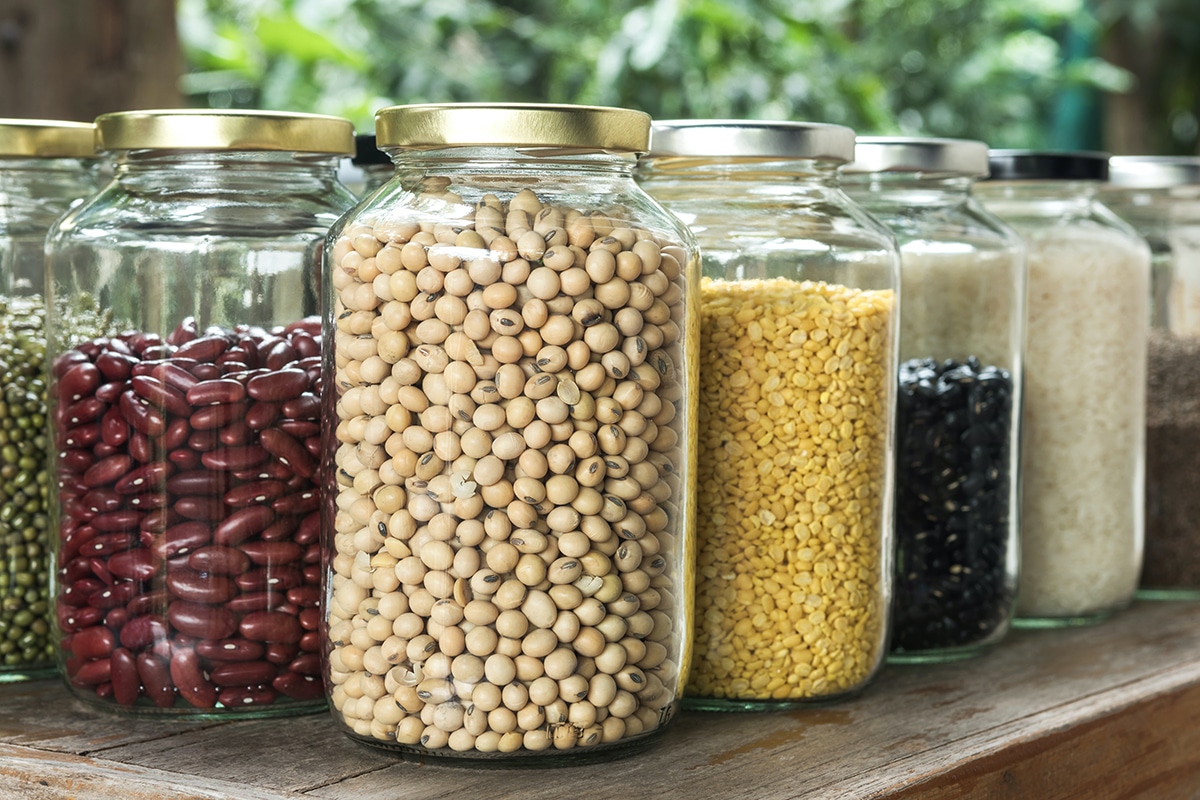
Jump to:

+ Subscribe to my newsletter for new and exclusive recipes in your in-box every month! As a full time traveler, living, working, cooking, and baking from a 5th wheel RV, it's also where I share our experiences of life on the road.
Save space and money with long shelf life foods
Long shelf life foods aren't just about saving space in your refrigerator, they are also often very economical. Grains like quinoa and farro, and all varieties of beans and legumes, are a budget friendly way to add protein and fiber to your diet.
Meals like vegetarian chili, black bean soup, vegan black bean tomato soup, and white beans on toast are favorites in our home. They rely primarily on inexpensive pantry staples like canned beans and tomatoes rather than pricier meat and dairy.
Regardless of how much space you have in your refrigerator or your kitchen, understanding how to include long shelf-life foods in your weekly meal plan can help you eat well on a budget and stretch the amount of time in between supermarket runs. Win, 👏 win 👏, win 👏.
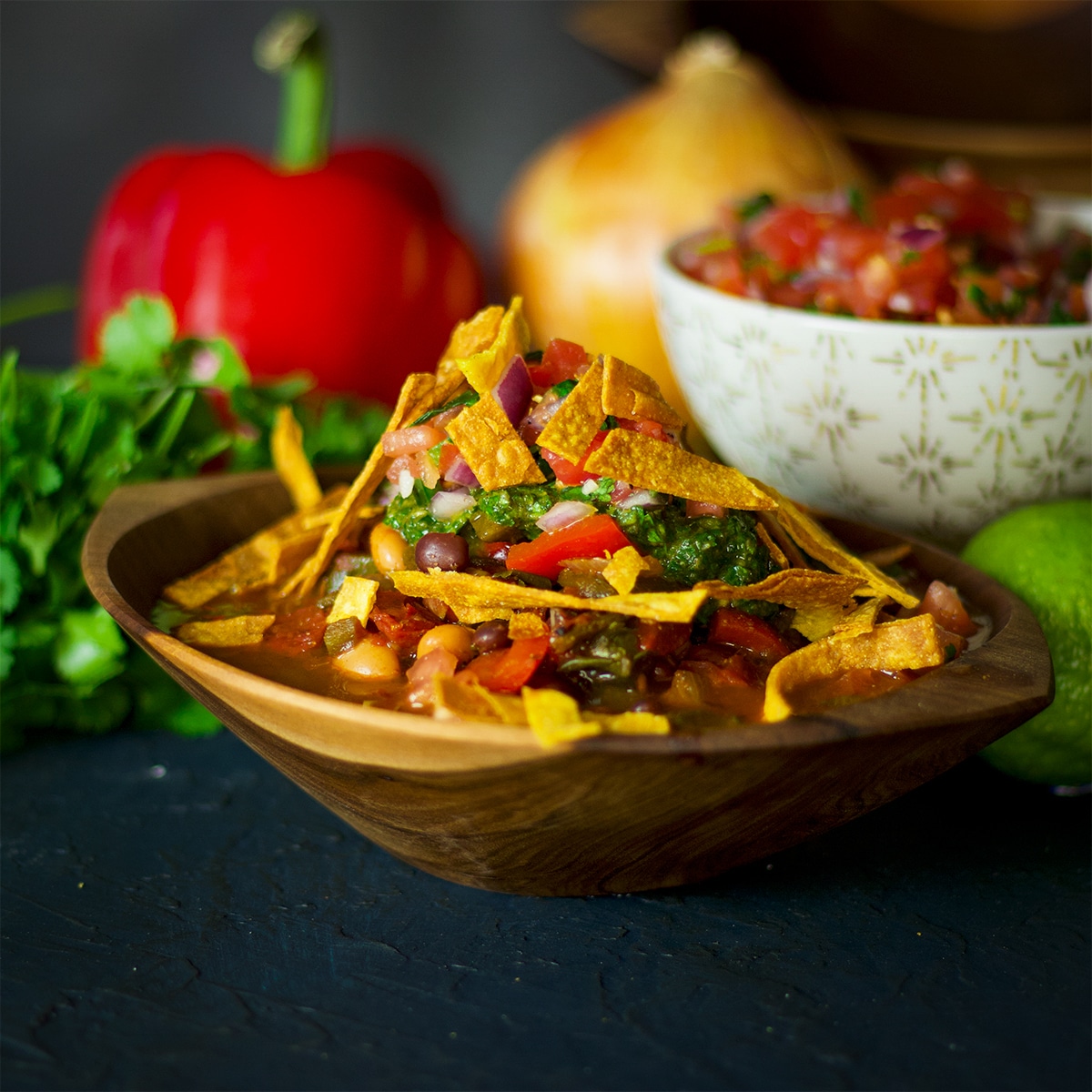
The pantry staples you'll always find in my kitchen
Grains and legumes
We have an entire drawer in our small RV kitchen just for grains and legumes. Here's what you'll almost always find in there:
Quinoa. Quinoa is a super versatile, and nutrition packed whole grain that I find totally delicious. Two of my favorite things to make with quinoa are quinoa stuffed acorn squash and rosemary braised steak tips over quinoa.
Couscous. There are several different kinds of couscous but my favorite is Israeli couscous (pearl couscous) so that's what you'll usually find in our kitchen. I use it to make this vegan couscous salad at least a couple of times a month and couscous bowls with butternut squash and sausage throughout the fall and winter.
Farro. Farro is a chewy, slightly nutty tasting wheat grain that, like quinoa, is a complete protein making it a fantastic substitute for animal proteins that must be refrigerated or frozen. I especially love to add farro to salads.
Oats. We eat oatmeal for breakfast at least once or twice a week and sometimes more often than that. In addition, I love to make this homemade maple almond granola and these giant oatmeal raisin cookies are one of our favorite treats.
Lentils. We pretty much always have a bag of red lentils and a bag of green lentils in our kitchen. Red lentil dal, red lentil soup, and sausage and lentil soup are three of our favorite meals to make with them.
Dried beans. Most of the time you'll find a bag of chickpeas, white beans, and black beans in our kitchen. But we love all kinds of beans and cooking beans from dried is more economical and more delicious than canned beans.
Rice. I almost always have long grain white rice like basmati or jasmine rice, brown rice, and wild rice in my kitchen.
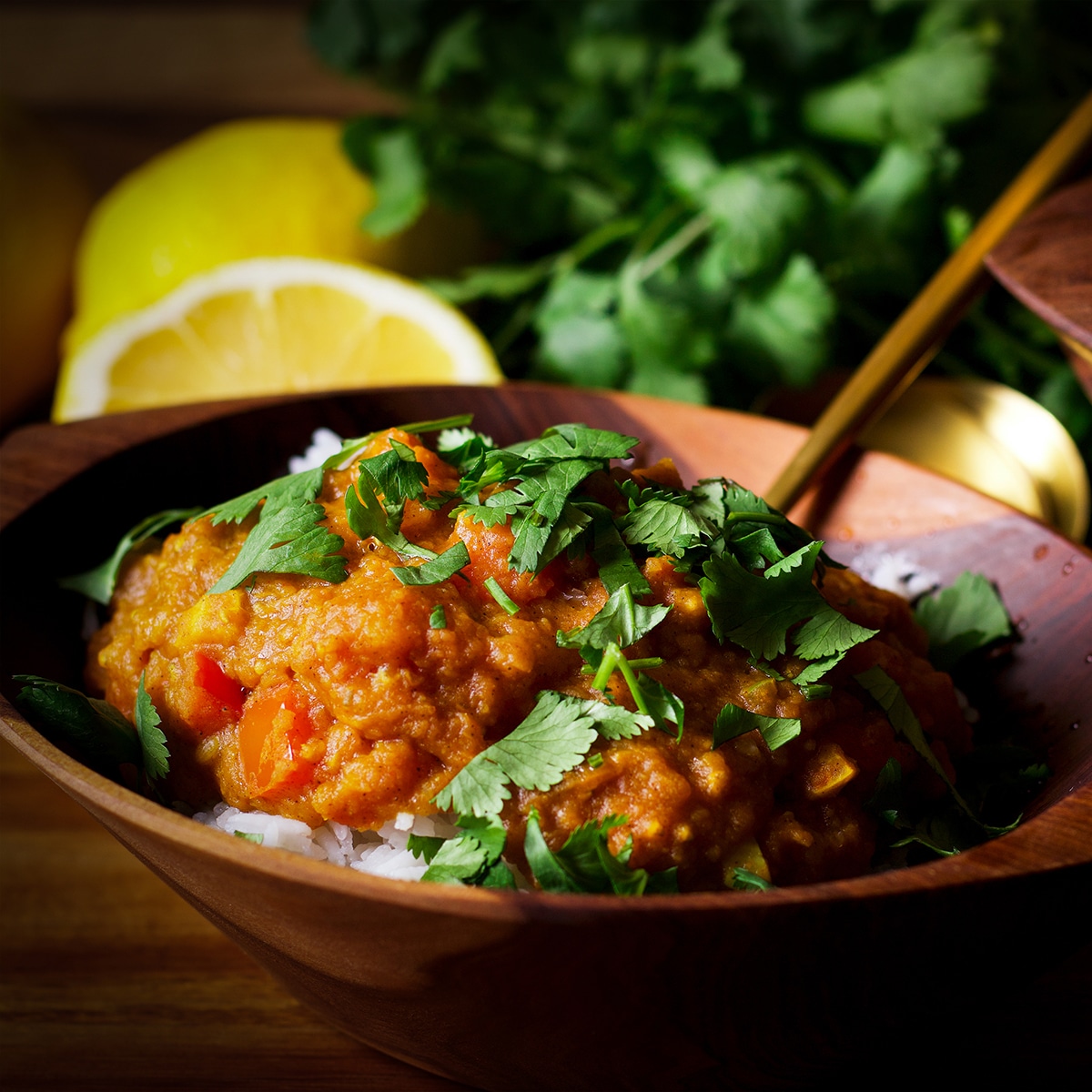
Canned goods and preserved foods
The canned goods you keep in your pantry depend entirely on what you plan to cook with them and how much space you have, but you can create entire meals with these long shelf life foods.
For example, this taco soup recipe with ranch dressing is made almost entirely with canned beans and veggies and seasoning packets. Add some ground beef and a chopped onion, or omit the beef and use dried onion flakes for a delicious meal made entirely with pantry items.
In our kitchen, you'll most often find green chilies, a couple cans of beans, roasted red pepper, olives, artichokes, diced tomatoes, crushed tomatoes, a few tins of tuna and sardines, and a jar of capers.
You'll also find some fermented vegetables like sauerkraut, pickles, banana peppers, and kimchi, and jars of jam and honey.
I don't do any fermenting myself, but I do usually make a few jars of peach preserves and strawberry rhubarb jam in the summer, storing them away to get us through the winter.
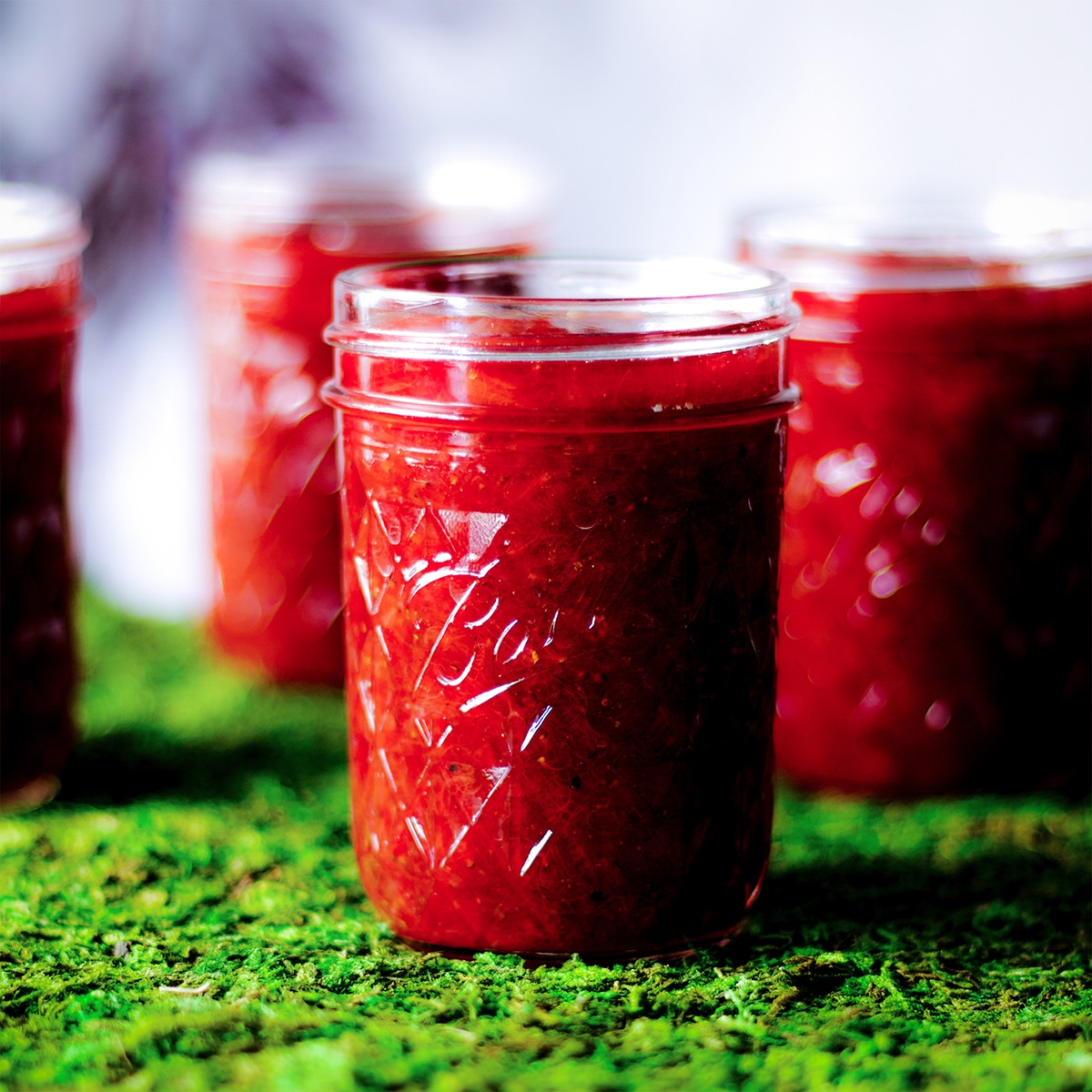
Dried fruits, nuts, and seeds
Dried fruits and nuts are two of my all-time favorite snacks. At any given moment you'll find several varieties of nuts in our kitchen, both raw and roasted.
Raw cashews are particularly useful because they can be used to make vegan sour cream. I actually prefer the flavor of vegan sour cream over dairy sour cream but also the shelf life of cashews is six to nine months, which is obviously much longer than a carton of sour cream.
I'm completely obsessed with dried mangos and tart dried cherries. And even though I love to bake, I can't think of a better dessert than a few dried dates or figs and a handful of nuts.
The two kinds of seeds I keep stocked in our kitchen are chia seeds and roasted pumpkin seeds. I add chia seeds to our oatmeal and smoothies to boost their protein content. And I toss pumpkin seeds on salads like this vegan pearl couscous salad.
Pasta
Ok. Full discloser here: If we're going to eat pasta, I almost always make fresh pasta from scratch. Fresh pasta is not a long shelf-life food, but it's so much better than the dried packaged variety.
But dried pasta is a fantastic long-shelf life food to keep in your pantry. Meals like spaghetti with homemade marinara sauce and spaghetti puttanesca are made almost entirely from pantry ingredients.
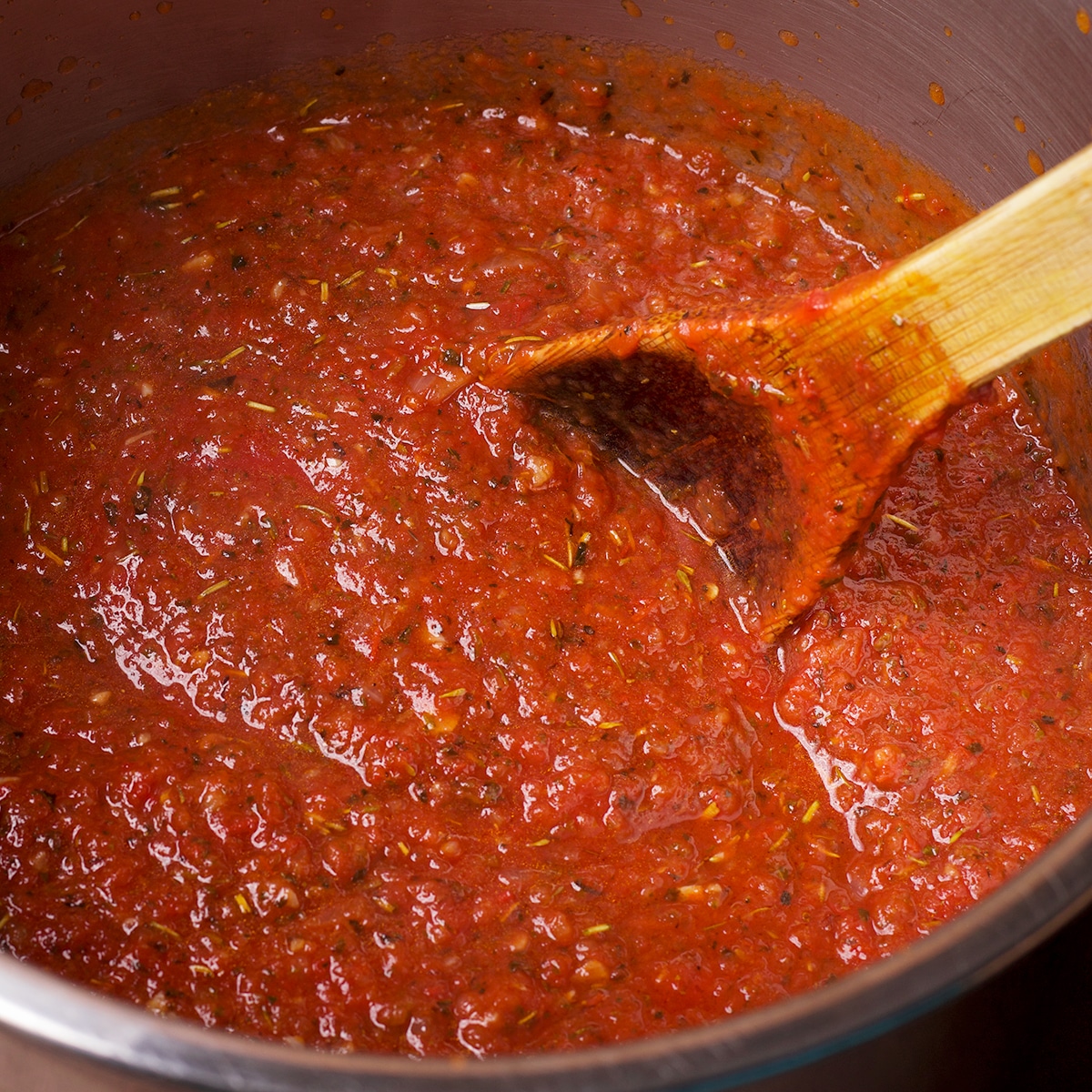
Pantry organization tip! In my kitchen, I use the top shelf of one small cupboard for canned goods. The cans and jars are stacked on top of each other to maximize space and it can be impossible to remember what canned goods are in the back of the cupboard. So, I keep a list of everything in there on my phone.
When I remove an item from the cupboard to use, I simply erase it from my list. When I restock, I add each new item to the list before placing it in the cupboard so I always know what's in there without having to pull everything out.
Safety and storage information for long shelf-life foods
When stored properly, shelf-stable foods can remain safe to eat for months or even years. If you do any home canning or fermenting in order to transform fruits and vegetables into shelf-stable foods, be sure to follow the USDA guidelines for shelf-stable food safety.
Check out the food product dating system for food sold in the United States so you can use the sell by date on pantry items to determine their freshness and when it might be time to throw an item out.
Make sure all grains and legumes are kept in airtight containers and stored in a cool, dark, and dry space. Nuts also benefit from being stored in a cool dry place.
Canned goods can be stored pretty much anywhere but pay attention to any evidence that their seals are not intact. If you have any bulging or leaking cans or jars, throw them out.
Recipes that primarily include pantry ingredients
Brown butter sauce pasta with crispy bread crumbs is my favorite way to use up the last few pieces of a loaf of bread. The only refrigerated ingredients in the recipe are butter, of course, plus some parmesan cheese and Italian parsley. But, the cheese and parsley are completely optional because, not surprisingly, pasta drenched in brown butter is delicious all on its own.
If you omit the ham, which I often do, red lentil soup is made almost entirely from shelf stable pantry ingredients. The same is true for spaghetti puttanesca, which is just as delicious made with canned tomatoes as it is with fresh.
This homemade marinara sauce is my all-time favorite recipe and something I make all the time. Aside from onions and garlic and some fresh herbs, every ingredient is a long shelf life pantry item. And, you could even swap out the fresh onion, garlic, and herbs for onion powder, garlic powder, and dried Italian seasoning.
If you omit the chicken, which is optional anyway, 20-minute garlic chipotle pasta is made entirely from shelf-stable pantry items.
And, if you want to know how to cook dried beans from scratch, here's how to cook beans in the slow cooker and here's how to cook beans in the instant pot.
The stuffing in this recipe for quinoa stuffed acorn squash relies entirely on pantry ingredients. Obviously, acorn squash is not a long shelf life food, but if stored in a cool, dry place it will keep for one or two months and does not require refrigeration.
Shelf stable sour cream??? That's basically what you get with this vegan sour cream. Once prepared, vegan sour cream must be refrigerated. But the ingredients are all pantry items if made with a dairy free milk that doesn't need to be refrigerated until it's opened like Califa Farms unsweetened almond milk. This means you can make only as much as you need when you need it without worrying about using up that carton of sour cream before it spoils.
Indian rice is one of my favorite side dishes to serve with any kind of Indian food but especially butter chicken. The recipe calls for fresh onion and garlic plus frozen peas, but the peas can easily be omitted and the onion powder and garlic powder can stand in for the fresh vegetables.
Nearly every single ingredient in this black bean soup recipe has a long shelf life and the soup is rich and creamy and absolutely delicious. The same is true for vegetarian chili and black bean tomato soup.
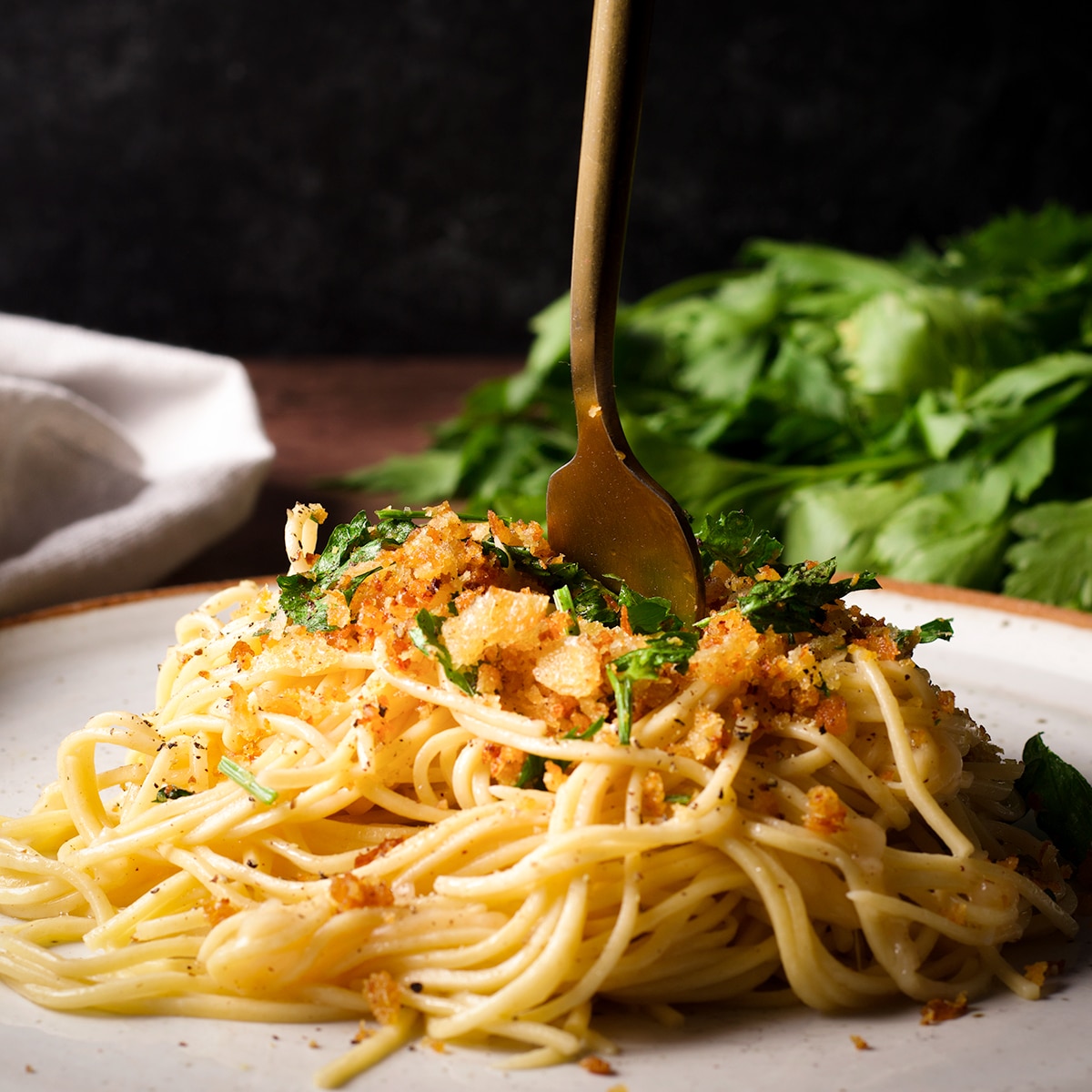

+ Subscribe to my newsletter for new and exclusive recipes in your in-box every month! As a full time traveler, living, working, cooking, and baking from a 5th wheel RV, it's also where I share our experiences of life on the road.


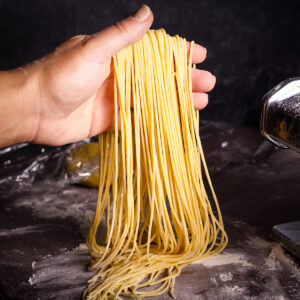
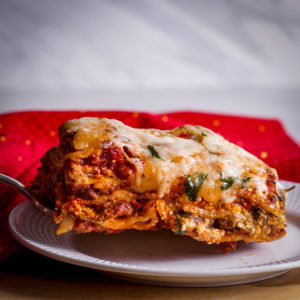
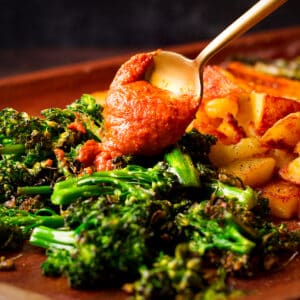
Comments
No Comments